From the county motto to Tom Crean, spectacular countryside and Charlie Chaplin! Here's what you need to know.
With stunning sights such as the Ring of Kerry, the Dingle Peninsula, and the Skellig Islands, County Kerry is one of the most famous and beautiful of Ireland’s 32 counties.
Read on for ten of the most interesting and surprising facts about County Kerry – adapted from Brendan John Murphy’s "County Kerry: 101 Interesting Facts."
The Kerry motto is “Cooperation, Help, and Friendship”
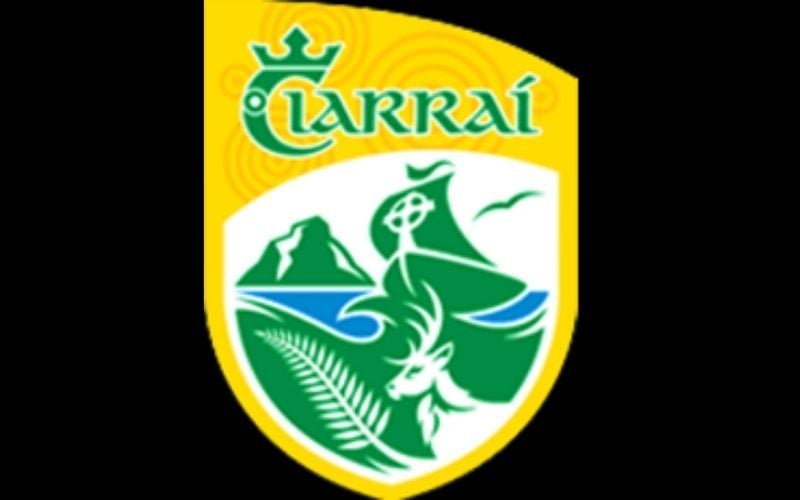
A modern version of County Kerry's crest. (GAA)
County Kerry’s Irish motto, “Comhar, Cabhair, Cairdeas,” translates to “Cooperation, Help, and Friendship.”
The blue and white mountains in the center of the County Kerry crest symbolize Kerry’s mountains – the highest in Ireland. The crown at the top stands for the Ciarraige, the pre-Gaelic people who gave their name to the county. The crosses on either side of it represent the monasteries of Ardfert and Aghadoe. The boat represents St. Brendan the Navigator, who is said to have discovered America long before Columbus did.
Kerry is home to Ireland’s highest mountain and mountain pass
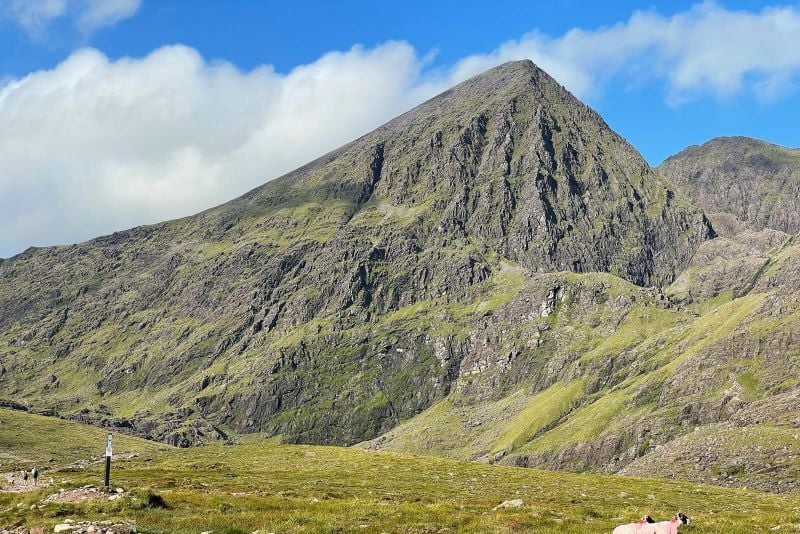
Carrauntoohil Mountain, County Kerry. (Ireland's Content Pool)
Carrauntoohil, in the MacGillycuddy Reeks range, is Ireland’s highest mountain, standing at 3,409 feet. The Reeks themselves stretch across 12 miles of the stunning Kerry landscape and also include Ireland’s second and third-highest mountains – Beenkeragh (3,313 feet) and Caher (3,284 feet).
The Reeks are also home to Ireland’s highest lake, Cummeenoughter Lake, nicknamed “The Devil’s Looking Glass,” which is 2,320 feet above sea level. The Conor Pass, near Dingle, is Ireland’s highest mountain pass.
One of the greatest Antarctic explorers was from County Kerry
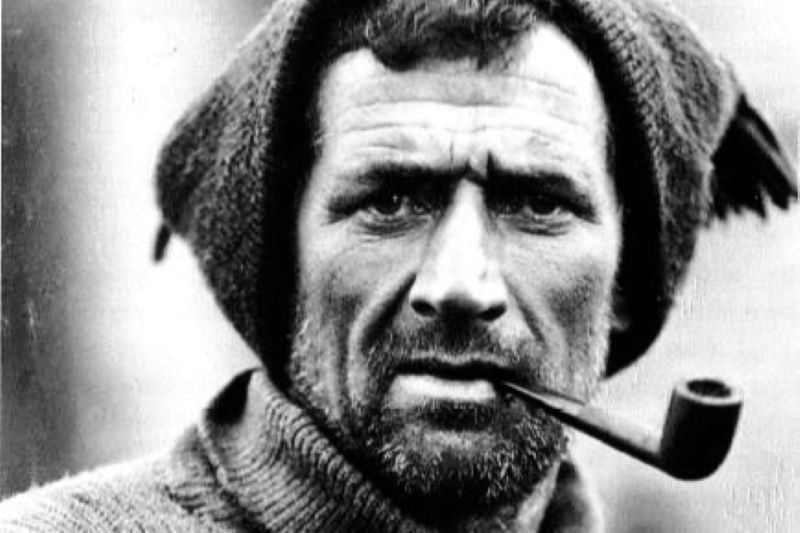
: Photo of Tom Crean taken aboard the Endurance, 1914. (Public Domain)
Tom Crean (1877 – 1938) was born near Annascaul, Co. Kerry. A seaman and Antarctic explorer, he was part of the Discovery and Terra Nova expeditions led by Captain Robert Falcon Scott to the South Pole.
He was also part of Ernest Shackleton’s mission on board the ship Endurance (1914-16) and became the hero of the doomed venture. During the Endurance expedition, the crew abandoned ship after it became locked in the ice of the Wendell Sea. They sailed in three small boats to the desolate Elephant Island before Crean and five companions, including Shackleton, journeyed 800 miles in the tiny James Caird to South Georgia, marched 40 miles across its uncharted, glaciered interior to reach a whaling station, and returned for the castaways on Elephant Island.
After making it to safety, Crean returned to Annascaul, where he set up the pub, The South Pole, with his wife, Ellen.
The first transatlantic telegraph cable traveled from County Kerry to North America
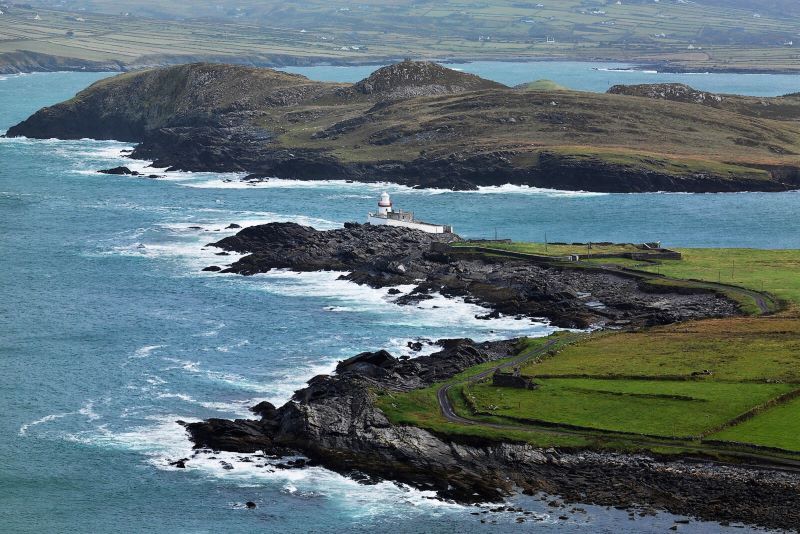
Valentia Lighthouse, County Kerry. (Ireland's Content Pool)
Valentia was the eastern terminus of the first commercially viable transatlantic telegraph cable which stretched from Valentia to Heart's Content, Newfoundland in 1866. Transatlantic telegraph cables operated from Valentia Island for one hundred years, linking Europe and America for the first time ever.
A plaque was unveiled on the island in 2002 commemorating the extraordinary achievement of linking the two continents.

Are you planning a vacation in Ireland? Looking for advice or want to share some great memories? Join our Irish travel Facebook group.
County Kerry has been called “The Kingdom” since the first century
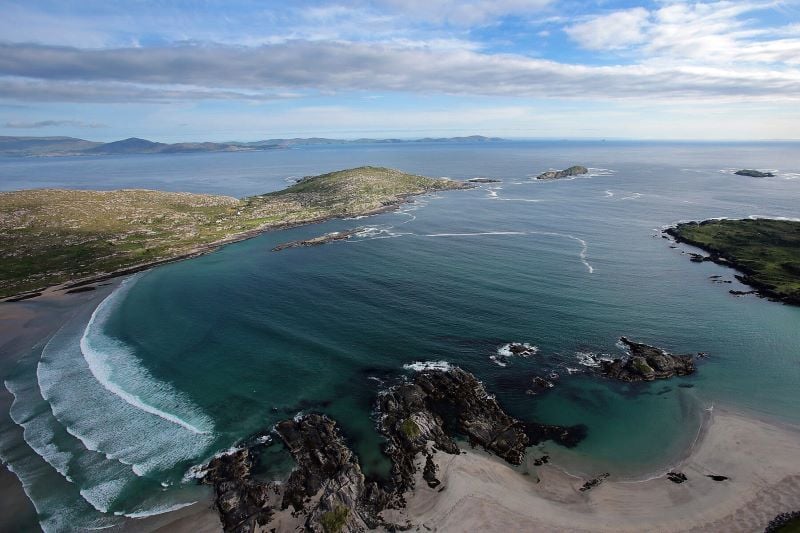
A portion of the Ring of Kerry. (Ireland's Content Pool)
It’s said in Kerry that, “There are only two kingdoms, the Kingdom of God and the Kingdom of Kerry.”
Use of the nickname “The Kingdom” to refer to Kerry dates back to 65 AD when one of the O’Connor clan took control of the area. The O’Connor chieftain’s name was “Ciar” (pronounced “keer”) and his descendants became known as “Ciar-raigh,” (pronounced “keer-ree”), which roughly translates to “Ciar’s people” or “Ciar’s kingdom.” Ciarraigh was later anglicized to Kerry.
Charlie Chaplin was a fan of County Kerry
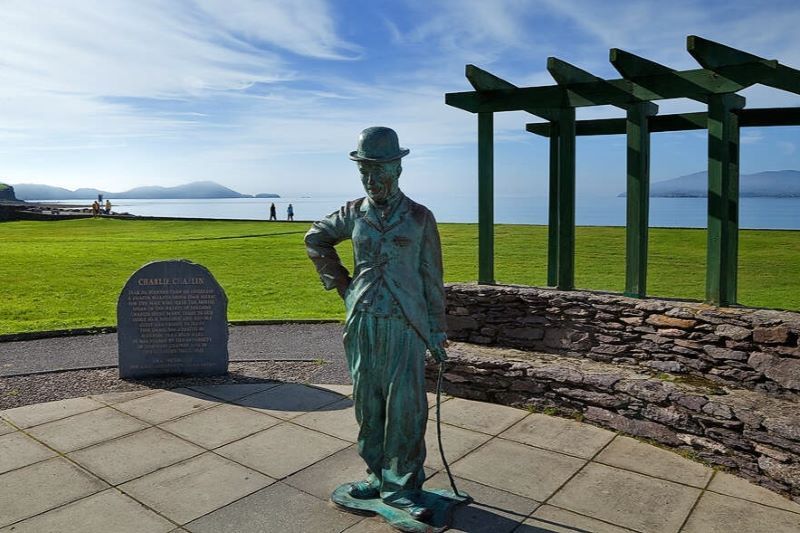
Charlie Chaplin statute in Waterville, Co Kerry. (Ireland's Content Pool)
The silent film star Charlie Chaplin, whose last wife, Oona O’Neill (daughter of playwright Eugene O’Neill) had Irish ancestry, found a home away from home in Waterville, Co. Kerry.
Chaplin (1889 – 1977) traveled with his family to Waterville many times throughout the 60s and 70s, often staying at the Butler Arms Hotel. To this day, a statue of Chaplin overlooks Ballinaskelligs Bay in Waterville.
“M” in James Bond was inspired by a Kerryman
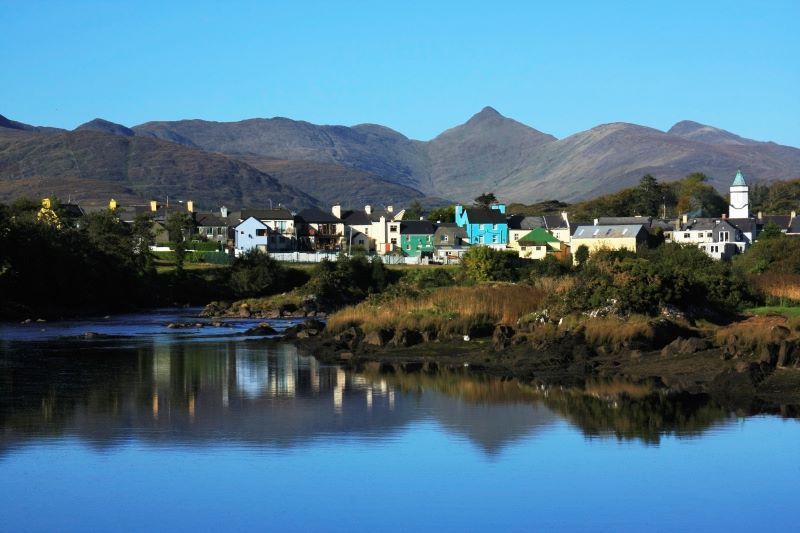
Sneem, County Kerry. (Getty Images)
It is widely believed that James Bond’s boss, “M,” was inspired by a man named William Melville (1850 – 1918) from Sneem, Co. Kerry. After moving to London as a young man, he joined the then newly formed London Metropolitan Police, where he was a founder of the Special Irish Branch, which monitored Irish Nationalists and subversives. Melville was a Catholic and supported Home Rule for Ireland.
In 1903, Melville became head of the British Secret Service and went by the code name “M” to hide his identity. In 1909, the British War Office set up a counter-espionage service, the Secret Service Bureau, later named MI5 and MI6. William Melville was appointed Chief of the Bureau, and many of the tactics and methods developed by him are still in use to this day. The nature and secrecy of Melville’s work meant he was practically unknown. However, the creator of James Bond, Ian Fleming, did know about him because he too worked for the Secret Service.
County Kerry is home to Ireland’s oldest thatched cottage
The handing over of the Keys to Sheehans Thatch Cottage Finuge...Today I was given, a most amazing video. The handing over of the keys of Sheehans Thatch Cottage, from Patrick Sheehan to the community of Finuge in 2000. This amazing video features never before seen footage, of a few National Heroes and a few local ones too. Many of whom are no longer with us. From Eamon Kelly, and his wife Maura, John B Keane, and Maureen Beasley. With performances from Peggy Sweeney and the Bogadeers. This incredible video has the blessing of the thatch from the late great Fr. Pat Moore. So lovely to see him in his finest role of the peoples priest. So take twenty minutes out of your busy day and watch some of North Kerry's finest, together at the handing over of Sheehans Thatch Cottage. I will post part 2 tomorrow. This video was produced and edited by Dylon Byer and Charles Nolan. #traditionalfestival #seanmccarthyweekend
Posted by Sean McCarthy Memorial Weekend Festival - Finuge on Monday, May 8, 2017
Where is the oldest thatched house in Ireland? County Kerry, of course!
Sheehan’s Thatched House at Finuge Cross, near Listowel, was built over 300 years ago and is the oldest surviving authentic thatched house in Ireland.
The house is a three-bay single-story example of a “direct entry” type of traditional Irish house. It is rectangular in plan, with each room opening into the next without a passage or central hall, and the entrances and windows are found on the side rather than the end walls. The walls are of rubble stone construction, finished with a lime-based wash. The house also features a traditional half-door, which in the bygone days offered important advantages: it allowed a good deal of both daylight and fresh air into the house while at the same time keeping the angry hens out. It also served as an armrest while the owner chatted to a passing neighbor.
The house is owned by the Sean McCarthy Committee and was purchased and renovated in 1993 in memory of the beloved local storyteller, writer, musician, and broadcaster.
The world’s oldest footprints can be found in County Kerry
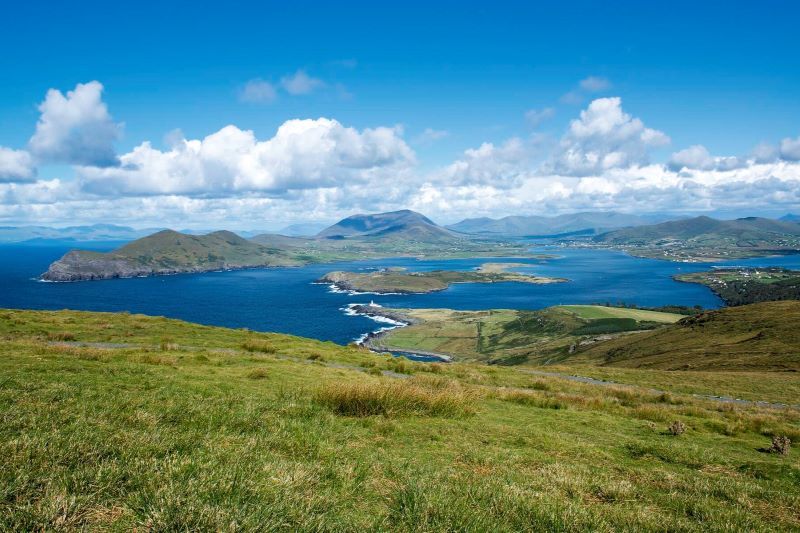
View from Valentia Island, County Kerry. (Ireland's Content Pool)
More than 385 million years ago a large amphibian animal walked on soft sediment on the shoreline of Valentia Island in Co. Kerry. The footprints are preserved in the rock as shallow impressions. This large amphibian was known as a Tetrapod and the footprints are the oldest known fossilized footprints in the world. They are also the earliest record of vertebrates moving onto land, breathing air, walking on all four limbs, and are also the first fossil record of an amphibian animal.
County Kerry is home to Ireland’s oldest traditional fair

Statue of King Puck in Killorglin, County Kerry. (Ireland's Content Pool)
Puck Fair, Ireland’s oldest traditional festival, is over 400 years old. It is the only festival in the world where a wild mountain goat is crowned king. The festival, which runs from August 10 to 12 and is expected to attract 80,000 visitors this year, was said to be linked to the Celtic festival of Lughnasa, which symbolizes the beginning of harvest. The goat was a symbol of pagan fertility.
Every year locals captured a wild goat in the Macgillycuddy Reeks and brought it back to town. Mulvihill writes that one of the best-known goat catchers was Michael 'Butty' Sugrue, once known as Ireland's strongest man.
The “Queen of Puck,” usually a young schoolgirl crowns the goat “King Puck.” The goat is placed in a small cage on a high stand for three days as the locals celebrate with markets, entertainment, and pubs staying open until 3 am. At the end of the fair, the goat is released back into the wild.
What's your favorite thing about County Kerry? Let us know in the comment section, below!
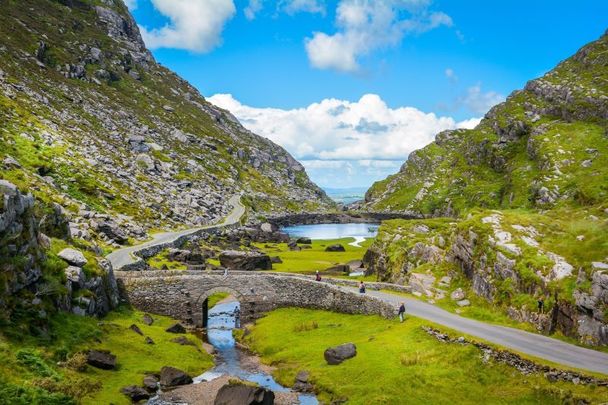


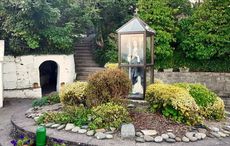
Comments